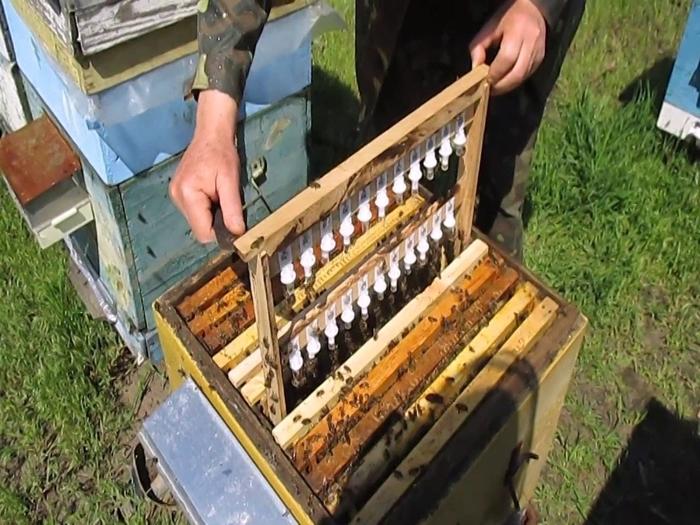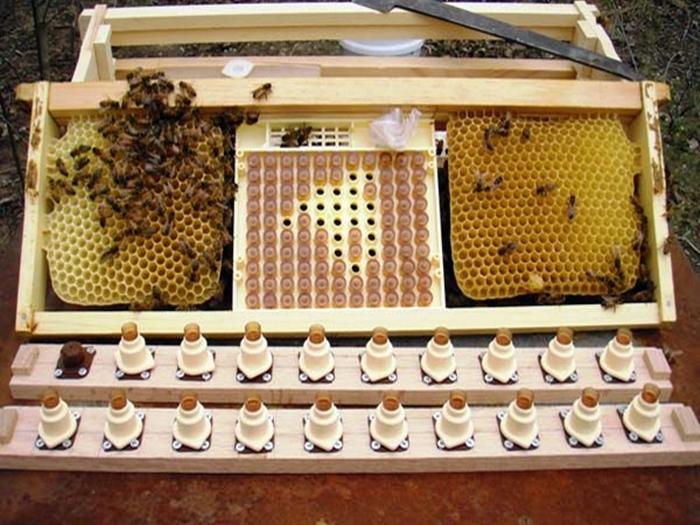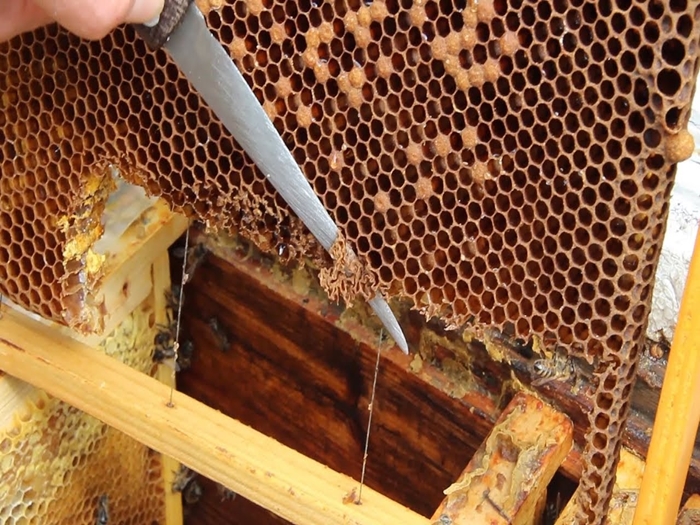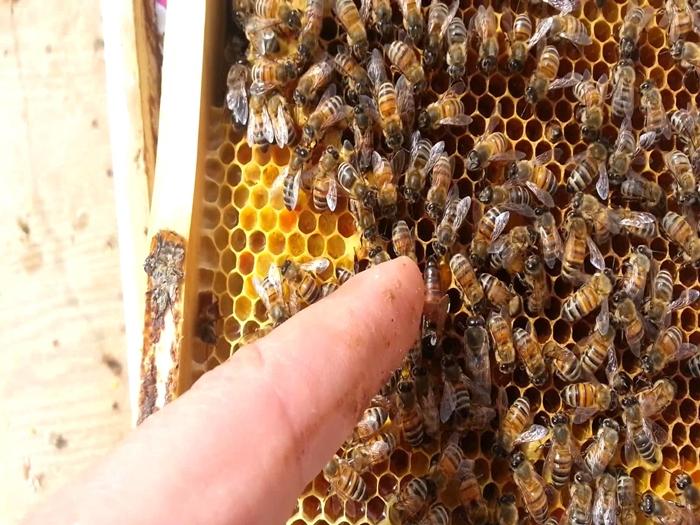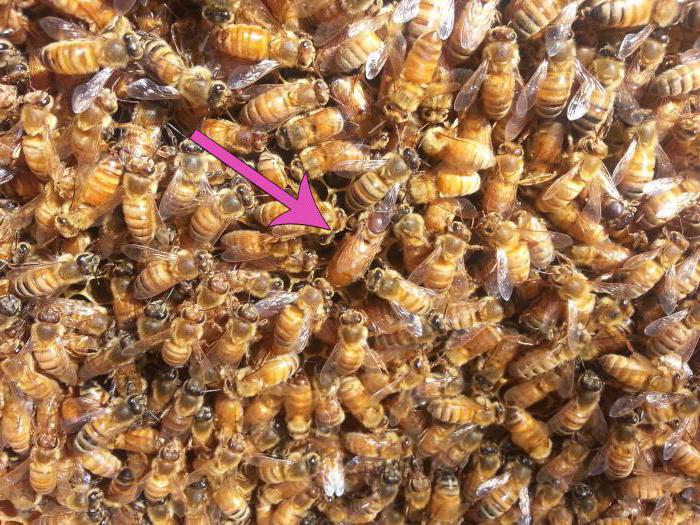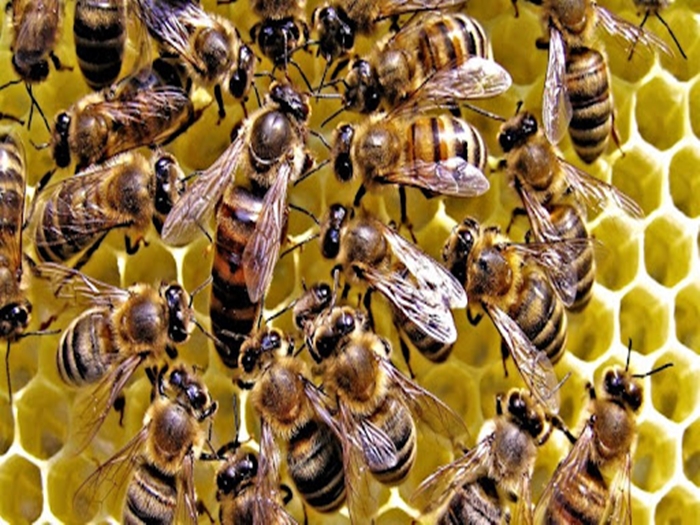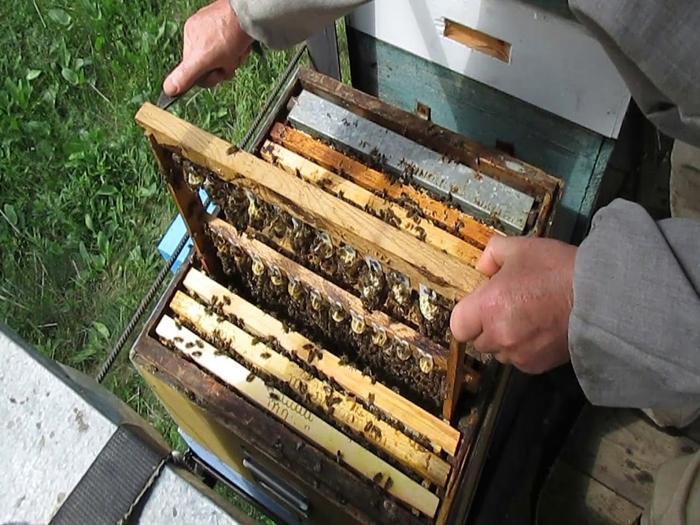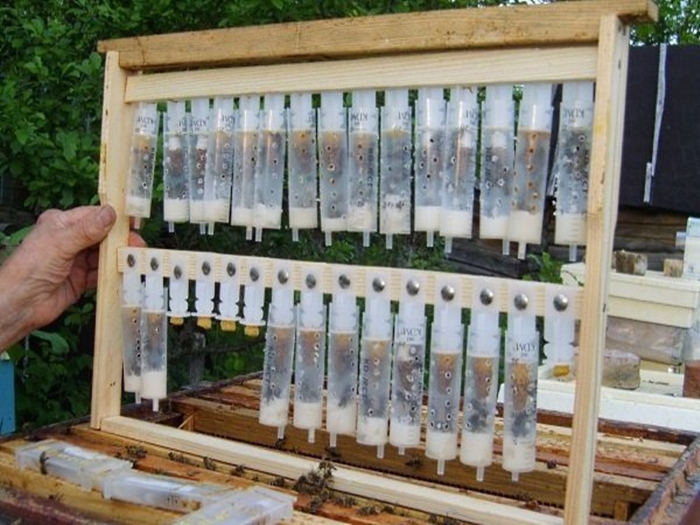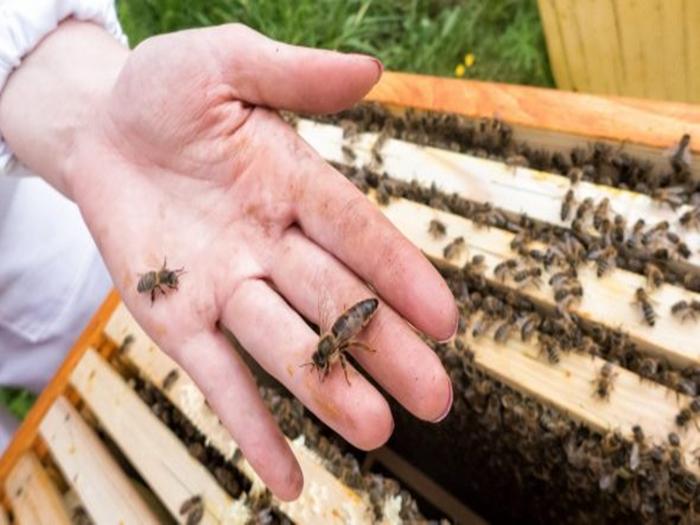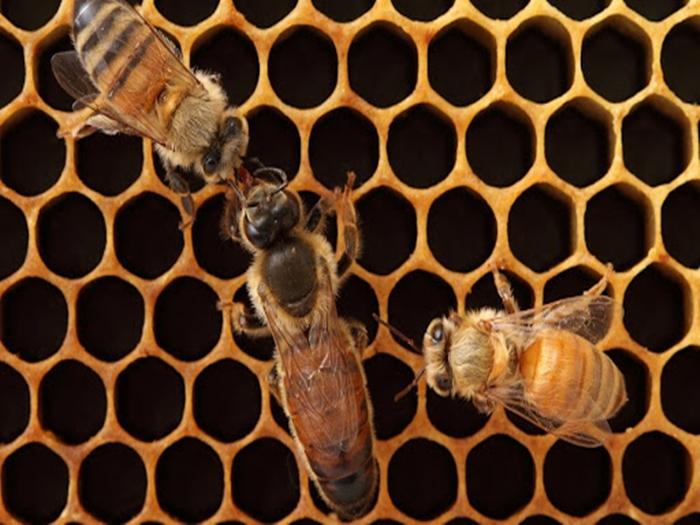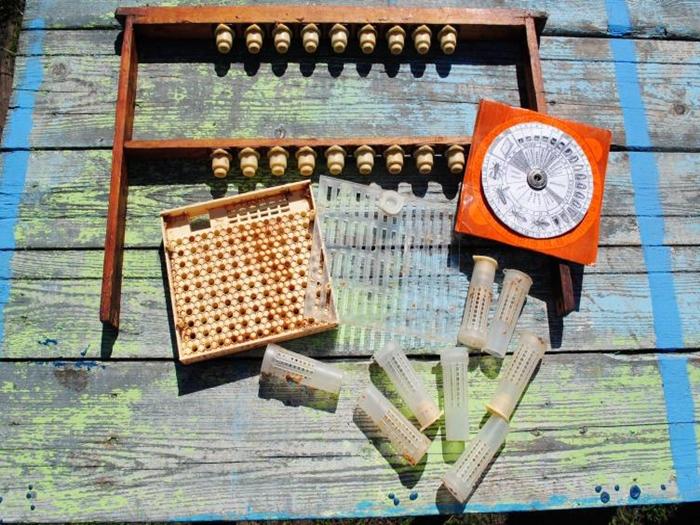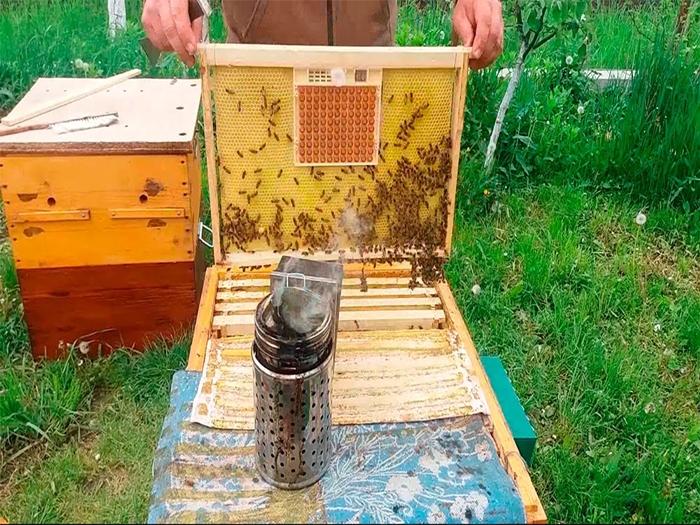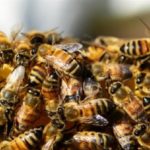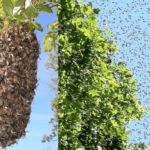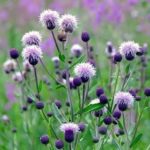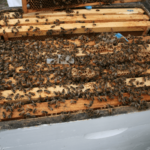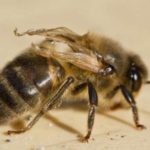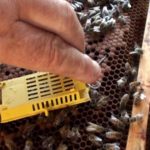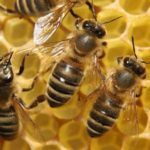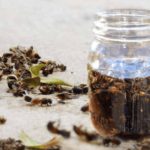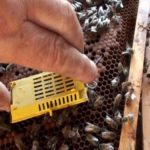Every beekeeper knows that queen hatching is considered an important element in maintaining the viability of the apiary and the development of bees. This is because the main function of the queen bee is to lay eggs. Worker bees are engaged in breeding the queen bee in the event of her loss, in preparation for swarming, or in case of a quiet shift. This can be done using natural or artificial means.
What is a queen bee?
The queen bee is the mother of all the bees that live in the hive. Under natural conditions, its lifespan can reach 8 years. However, in beekeeping, the queen needs to be replaced every 2 years. This is due to the fact that it is during this period of time that active sowing of eggs occurs. Subsequently, reproduction declines.
The queen bee differs from other workers in shape and size. The queen is characterized by an elongated body, which reaches 2-2.5 centimeters. The insect's abdomen protrudes beyond the wings. At the end there is a sting, which is used for protection from other queen bees.
The queen is characterized by smaller eye size. Weight and dimensions depend on the breed. It is also worth noting that uteruses can be fertile or infertile. The first ones perform sowing with worker bees, and the second ones with drones.
When should queens be bred?
It is recommended to breed queens in spring and early summer. It is not recommended to breed such individuals at the end of the season. This can only be done in the southern regions, which have good autumn harvest.
Rules for choosing and preparing a family
Before breeding the uterus, it is necessary to select the parent family. The characteristics of the offspring depend on this. The main selection criteria include the following:
- Honey productivity. This parameter is considered basic from the point of view of every beekeeper.
- The power of family. It should remain stable throughout the year.
- Frost resistance.
- Strong immunity and resistance to pathologies.
It is recommended to begin preparatory work 1 year before the intended breeding of individuals. This makes it possible to increase the strength of bee colonies that go for the winter.In addition, before the onset of cold weather, it is important to carry out a number of preventive measures:
- Assess the quality of honey.
- Take measures to prevent nosematosis. This requires cleaning and disinfecting the hive. The use of stimulating feeding is also important.
- Provide bees with food that does not crystallize.
With the arrival of spring, young queen bees can only be hatched after completely replacing overwintered insects with new bees that have just been born. This process ends in the first ten days of May.
If you want to start breeding earlier, it is recommended to stimulate the insects with protein and carbohydrate feeding. Optimizing living conditions in the hive is of no small importance. It needs to be insulated and protected from the wind.
Methods for breeding queens
All methods of breeding new queens are divided into 2 broad categories - natural and artificial. Each of them has its own characteristics.
Natural
The easiest way to breed queen bees is naturally. This requires the colony to enter a swarming state. If you create comfortable conditions for this in the hive, the process will speed up significantly. In this case, 3 frames with brood should be placed in the hive and the entrance should be covered. It is important to ensure that there are no frames without brood.
Then you need to wait for the laying of the queen cells. After which it is necessary to form layers on them and on the new frames. It is worth noting that it will not be possible to correctly predict the laying of queen cells, which is considered the main disadvantage of this method.
Another natural method of breeding is considered to be fistulous queen bees. The main advantage of this method is to obtain insects in the required time frame. This method is now very popular among beekeepers.To implement it, insects must be forced to lay fistulous queen cells.
It requires shaking bees off several frames. As a result, you will be able to obtain a ready-made layer that needs to be placed in a permanent hive.
Queenless bees from a previous hive must lay fistulous queen cells. In this case, you need to make sure that they are only on mature larvae, or cut them off. This method allows you to obtain higher quality queens.
Artificial
Artificial methods are considered quite simple. Therefore, any of them is suitable even for a novice beekeeper. To do this, you need to select a frame with young brood and eggs from the strongest family. Then you need to cut a hole on top. Its size should be 3 by 4 centimeters. All lower walls of the cut must be removed. As a result, it is worth leaving 2 larvae.
The frame must be installed in the nest of a queenless colony. After a few days, you can check the laying of queen cells. When the bees have laid the required amount, it is recommended to cut off the fistulous queens. If there are no queen cells, then there is a queen in the hive, but there is something wrong with her.
The second method is used at home if you want to get 5-10 insects at once. In this case, you need to place the queen bee in a strong family. It must be placed in a two-frame insulator. There you also need to insert a frame with mature brood and a frame with cells. The top of the structure must be covered with frames. It is recommended to install the insulator back into the colony, placing it between the frames and the brood.
After a few days, you can proceed to the formation of the nucleus. It includes 3 frames - with honey, dry food and brood. Then you need to add insects from several frames and install a queen from the insulator.
After this, it is recommended to take the frame with fresh brood into the house and cut off the lower part of the beginning of the appearance of the larvae. The frame can then be installed back into the family from which the queen was removed. After a few days, all that remains is to check the bud and remove the fistulous queen cells. 2 days before the appearance of the queen bees, it is worth removing the queen cells by cutting strips and putting them back to ripen. After the release of the maternal individuals, it is necessary to place them in cores.
Stages, cycle, timing of uterine development
Removal of the uterus is characterized by the following stages:
- on the 7th day the queen cell is sealed;
- on the 16th day a barren individual emerges;
- after 3-5 days of stay in the hive, flight occurs;
- a week later the nuptial flight occurs;
- after 2 weeks it becomes possible to determine the quality of the uterus.
The development time of bees depends on the microclimate in the home, weather, and the strength of the colony. Therefore, the uterus may come out a day earlier or later. General hatching times for a queen bee can range from 26 to 30 days or even longer.
How to remove a queen without a larva?
For beginners, you can use the method of removing the queen without transferring the larvae. To do this, you need to choose a strong bee colony. Then install an insulator in the center of the body in which egg-laying will take place. If there is no insulator, it is permissible to use honeycomb instead. When larvae appear in the honeycombs, they can be planted in the prepared layering.
Then you need to do the following:
- After 6 hours, you need to take the honeycomb with eggs and pull it out of the hive.
- Using a heated knife, cut out a strip with laid eggs.
- On one side, cut to half the height. As a result, out of 3 cells, 1 will remain.
- On the remaining cells with larvae, carefully enlarge the holes. Queen cells will be built here.
- Attach the prepared strip to an empty honeycomb frame.
- Make a hole maximum 5 centimeters in size.
- Glue the strip with melted wax and make holes. Their number is selected depending on the required number of queens.
Growing the queen
The queen bee is raised where the larvae are selected. In this case, the frame must be placed in the place where it was removed. Worker bees will accumulate here and control the order, the delivery of milk and the construction of the queen cell. This allows families to become educators. Before the queen emerges, the queen cell must be cut out and placed in the nucleus.
Reproduction of queen bees can be carried out in different ways - natural or artificial. They have their pros and cons, which allows each beekeeper to choose the best option.

